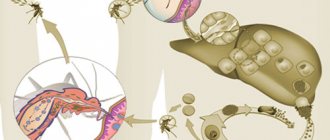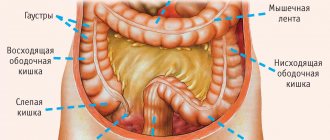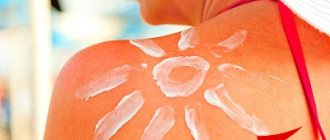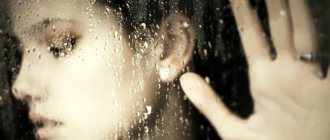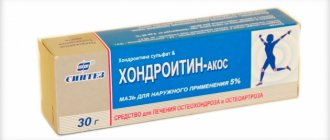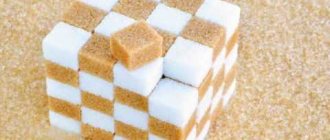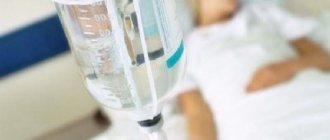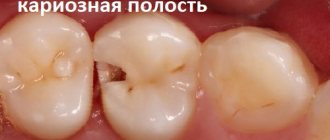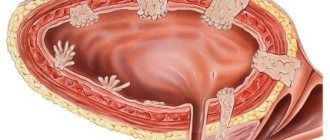- October 6, 2018
- Psychological terms
- Elena Klimova
Autistic disorder is a congenital pathology that is expressed in difficulties in contact with other people. Symptoms of the disease appear at an early age. Patients often have speech dysfunction and delayed intellectual development. Who an autistic person is and what features are characteristic of pathology is described in the sections of the article.
Influence of genetic factors
Experts have identified a pattern of development of autism in certain types of families. This allows us to draw a conclusion about the hereditary nature of the diseases. Today, a number of studies are being conducted to establish which genes are responsible for the occurrence of pathology.
In modern society, there is an opinion that vaccinations are the cause of the disease. Experts refute this theory. Moreover, refusal to vaccinate is extremely dangerous for children's health. Scientists have found that first-born children and male individuals have the highest risk of developing pathology.
The likelihood of the disease occurring increases if the family already has a patient with a similar diagnosis.
Who is autistic? First of all, this is a person who has a defect in brain function, which is most likely of a genetic nature. Pathology is expressed in behavioral and intellectual disorders.
Other Possible Causes
Contrary to popular belief, the disease does not develop under the influence of an unfavorable psychological environment, poor upbringing or an unbalanced diet. Scientists suggest that the factors influencing the occurrence of pathology are infections and exposure to toxins during gestation, as well as hypoxia. In addition, it is known about autists that many of them are late children. Consequently, the risk of developing the disease increases with the age of the parents.
In addition, this diagnosis is often made to persons with concomitant pathologies, for example:
- Down syndrome.
- Tuberous sclerosis.
- Angelman syndrome.
- Epileptic encephalopathy.
- Fragile X chromosome.
What do autistic people look like? Photos are presented in sections of the article. In people with this diagnosis, in the absence of concomitant illnesses, there are no physical abnormalities.
Autistic people make a shocking impression because of their isolation and detachment. But they have good prospects for socialization. Good results can be achieved through early detection and correction of symptoms.
Features of the pathology
The question of who an autistic person is and what characteristics he has cannot be answered unambiguously. The fact is that, along with the general signs of the disorder, there are individual traits inherent in the personality of a particular patient. Features of the disorder that make it possible to identify it are often observed in patients already in infancy. After all, autism is a congenital disease. There are three periods of the disease:
- Up to two years. This stage is called early.
- Childhood autism. This term refers to the period from 2 to 11 years.
- From eleven to eighteen. This stage is called adolescence.
- After 18 years. In this case, we talk about autistic disorder in an adult.
Each of these periods has its own characteristics. However, patients of any age differ from others and have characteristic disturbances in thinking and behavior.
Diagnostics
If autism is suspected in children, signs, symptoms and causes can be determined through diagnosis. Doctors are involved in determining the diagnosis and treatment of the disease:
- pediatrician;
- neurologist;
- psychiatrist;
- speech therapist;
- psychologist.
Diagnostics consists of conducting tests that evaluate the child’s behavior and mental development, as well as undergoing hardware examination.
The test for autism in children is carried out in accordance with the age of the patient. Signs of autism in children aged 1.5 years are assessed using a special modified screening test. This test is used by specialists to diagnose patients under 3 years of age .
Signs of autism in a child 4 years of age and older are assessed:
- on the behavioral adequacy scale;
- Connors scale;
- diagnostic questionnaire.
Hardware examination is aimed at diagnosing the brain:
- MRI;
- EEG;
- Dopplerography.
Additionally, a genetic and gastroenterological examination may be recommended.
Diagnosis must be comprehensive, since some symptoms of autistic disorder are similar to diseases such as:
- schizophrenia;
- a brain tumor;
- hearing or vision impairment, etc.
Most pediatricians, when asked by parents how to recognize autism in a child, recommend closely monitoring the child’s behavior to assess its compliance with known standards.
One of the famous autistics was Vincent Van Gogh - a brilliant artist of the past
Manifestations of pathology in children under 3 years of age
Already in the early stages of a child’s development, parents notice signs of the disorder. The patient develops the necessary skills late. Sometimes the baby begins to speak on time, but then loses the acquired skill. In some cases, the child may remain silent for a long time and not respond to requests from others. This creates the impression of hearing problems, although examinations indicate the absence of deafness. Parents notice that the baby often repeats the same actions; his games are too typical.
The child experiences attachment to certain objects, but does not show any feelings towards close people. Reactions to the appearance of mom or dad (smile, spectator contact) are not observed in young patients. Many patients demonstrate increased sensitivity to external influences (light, sounds, smells, touches).
How to identify autism
A diagnosis of autism cannot be made using medical tests or a one-time examination. The doctor is obliged to study the history of the child’s development, analyze the anamnesis, and conduct a survey of parents and other people who are often near the patient.
To carry out diagnostics, a team of qualified specialists is assembled:
- psychologist;
- neurologist;
- psychiatrist;
- psychotherapist;
- pediatrician;
- speech pathologist;
- others who have experience working with such children.
The patient is monitored in his usual conditions. Various questionnaires (ADI-R, ABC, ADPC), scales (ADOS, ADOS-G, CARS) and methods are used. They are aimed at obtaining information about:
- hobbies;
- communication skills;
- perception;
- motor skills;
- intelligence;
- speech abilities;
- games;
- social skills.
During hardware diagnostics, the state and functioning of the brain, autonomics, and cardiovascular system are studied:
- EEG;
- REG;
- EchoEG;
- MRI;
- CT;
- Ultrasound;
- pulsometry;
- ECG.
In addition, laboratory tests and tests for food intolerances and allergens are carried out.
Important! An accurate diagnosis can only be made from the age of three.
Correction of autism is more effective at an early age, while the process of formation and development of brain structures is underway.
Later symptoms
Typically, this disorder is diagnosed around the age of three. This period is associated with the beginning of visits to nurseries and kindergartens, where, against the background of peers, deviations in the behavior and development of the baby become most noticeable. One of the characteristics of an autistic person is peculiar speech. Such children do not use the personal pronoun “I” and do not understand its meaning. They speak in complex phrases. Often, young patients even reproduce long passages from adult speech and poetry. At the same time, they lack the skills to build a dialogue. Another sign of the disorder is uncontrollable emotional reactions. Such children experience attacks of uncontrolled and causeless laughter, fear, and impulsiveness.
As a rule, they are frightened by ordinary objects. On the contrary, potentially dangerous phenomena do not cause concern. The patients' movements are usually awkward, they often perform ridiculous actions (swaying, spinning, jumping in place). Intellectual development occurs unevenly. Often a child has pronounced abilities in one area (mathematics, music), but cannot master the skills of writing or reading.
Intelligence in autism
Most children with autism have mild or moderate mental retardation. It is associated with brain defects and learning difficulties. If the disease is combined with microcephaly, epilepsy and chromosomal abnormalities, then the level of intelligence corresponds to severe mental retardation. With mild forms of the disease and dynamic development of speech, intelligence can be normal or even above average.
The main feature of autism is selective intelligence. That is, children can be strong in mathematics, music, and drawing, but at the same time be far behind their peers in other respects. The phenomenon when an autistic person is extremely gifted in some area is called savantism. Savants can play a melody after hearing it just once.
Asperger's syndrome
There is a special type of autistic disorder called Asperger's syndrome. It is believed to be a mild form of classic autism that appears later in life.
- Asperger's syndrome appears after 7-10 years of age
- IQ level is normal or above average
- speech skills are within normal limits
- there may be problems with intonation and speech volume
- fixation on one activity or studying one phenomenon (a person with Asperger syndrome can spend hours telling his interlocutors a story that is of no interest to anyone, without paying attention to their reaction)
- Coordination of movements is impaired: awkward walking, strange postures
- self-centeredness, inability to negotiate and seek compromises
Most people suffering from Asperger syndrome successfully study in schools, colleges, find jobs, and start families with the right upbringing and support.
Rett syndrome
A severe disease of the nervous system associated with a disorder in the X chromosome occurs only in girls. With similar disorders, male fetuses are not viable and die in utero. The incidence of the disease is approximately 1:10,000 girls. In addition to profound autism, which completely isolates the child from the outside world, this syndrome is characterized by the following features:
- relatively normal development in the first 6-18 months of life
- slowing of head growth after 6-18 months
- loss of skills and purposeful hand movements
- stereotypical hand movements like washing or shaking hands
- poor coordination and low motor activity
- loss of speech skills
Unlike classic autism, Rett syndrome is often characterized by underdevelopment of the brain and epileptic activity; the prognosis for this disease is unfavorable. Correcting autism and movement disorders is difficult.
Autistic traits also appear in a child's intellectual development. What it is depends on the characteristics of the disease. As a rule, such children have a moderate or mild form of mental retardation. Patients suffering from this disease have difficulty learning due to their brain defects.
If autism is combined with chromosomal abnormalities, epilepsy, microcephaly, then profound mental retardation may develop. But if there is a mild form of autism, and the child’s speech is developing dynamically, then intellectual development may be normal or even above average.
The main feature of the disease is selective intelligence. Such children can demonstrate excellent results in mathematics, drawing, and music, but fall far behind in other subjects. Savantism is a phenomenon where an autistic person is highly gifted in one specific area. Some autistic people are able to play a melody accurately after hearing it only once, or calculate complex examples in their head. Famous autistic people of the world - Albert Einstein, Andy Kaufman, Woody Allen, Andy Warhol and many others.
Asperger's syndrome
There are certain types of autistic disorders, among them Asperger's syndrome. It is generally accepted that this is a mild form of autism, the first signs of which appear at a later age - after about 7 years. This diagnosis requires the following features:
- normal or high level of intelligence;
- normal speech skills;
- problems with speech volume and intonation are noted;
- fixation on some activity or study of a phenomenon;
- lack of coordination of movements: strange postures, awkward walking;
- self-centeredness, lack of ability to compromise.
Such people lead relatively normal lives: they study in educational institutions and at the same time can make progress and create families. But all this happens provided that the right conditions are created for them, adequate education and support are present.
Rett syndrome
This is a serious disease of the nervous system, the causes of its occurrence are associated with disturbances in the X chromosome. Only girls suffer from it, since with such disorders the male fetus dies in the womb. The frequency of this disease is 1:10,000 girls. When a child has this particular syndrome, the following signs are noted:
- deep autism, isolating the child from the outside world;
- normal development of the baby in the first 0.5-1.5 years;
- slow head growth after this age;
- loss of purposeful hand movements and skills;
- hand movements - such as shaking hands or washing;
- loss of speech skills;
- poor coordination and poor motor activity.
How to determine Rett syndrome is a question for a specialist. But this condition is slightly different from classic autism. So, with this syndrome, doctors determine epileptic activity and underdevelopment of the brain. The prognosis for this disease is poor. In this case, any correction methods are ineffective.
Symptoms in children of primary school age
This period is characterized by approximately the same symptoms as the early stages of the disease. An autistic person is a person who experiences significant difficulties interacting with others. And this feature of patients becomes even more noticeable after the child enters an educational institution, where he is constantly forced to communicate. Some patients cannot learn due to developmental delay. Others still acquire the necessary skills and attend school.
There are patients who demonstrate extraordinary abilities in certain subjects and talent in some activity. However, the child is not able to maintain eye contact and conversation and prefers to spend his free time alone. He has a clear daily routine. Such patients are very selective when choosing food and clothing. Any change in the environment causes horror or an attack of aggression in them.
Autism or another disorder?
The clinical manifestations of autism in children are similar to the symptoms of some diseases, so it is important not to self-medicate, but to immediately seek medical help. Such diseases (with similar clinical manifestations) include:
- delayed psycho-speech development - despite the similarity of symptoms, it can be easily corrected if you consult a doctor in a timely manner and conduct regular classes with the child;
- hyperactivity and attention deficit disorder - children are restless, have trouble concentrating, do not learn new material, and find it difficult to study;
- Hearing loss is a hearing impairment of a congenital or acquired nature. Due to the fact that the child has poor hearing, he has delayed speech development and difficulties communicating with others, as a rule, a hearing aid helps solve the problem;
- Schizophrenia is a mental illness that manifests clinically by talking to oneself, aggression, isolation, hallucinations, and impaired coordination of movements. Unlike autism, schizophrenia is successfully treated with medications and responds well to treatment.
Features of teenagers
During puberty, when hormonal changes occur in the body, such individuals have a much harder time than their peers. At this age, an autist is a person who is characterized by increased anxiety and becomes prone to aggression and depression.
He still has socialization problems. Some patients suffer from epileptic seizures during this period. However, the attacks usually disappear after puberty.
Features of the pathology in adults
The answer to the question of who is autistic is ambiguous in relation to adults. The fact is that the signs of the disorder in each patient are individual in nature and have varying degrees of severity. It all depends on the type of illness. The mild variety assumes normal intellectual abilities and good social skills. In this case, people who have reached 20-25 years of age can provide for themselves. They are not too dependent on relatives and even live separately.
In more severe cases, the patient needs constant monitoring from loved ones. What characteristics do people with this diagnosis have as adults? If a person is autistic, this means that he is completely immersed in the world of his own experiences. The patient either does not perceive the emotions of those around him at all, or understands them incorrectly. Adult patients have poor facial expressions. They are not able to master the basic laws of communication and do not respect the personal space of others. For example, an autistic person may come close to an unfamiliar interlocutor and look at him intently.
Some patients, on the contrary, avert their eyes and move away when talking. The patients' speech is too loud or very quiet, monotonous. In the process of communication, they do not recognize the hints and intentions of others, and are not able to perceive gestures or changes in facial expressions. Often people with this diagnosis do not realize that their statements offend others.
StopAutism
Our path to overcoming Autism, we are on the road to full recovery!
Autism burst into our home unexpectedly, without asking if we were ready, could we handle it?
At the age of one and a half to two years, our baby SUDDENLY lost many skills, began to be capricious,
running on tiptoes, waving his arms, babbling and understanding of spoken speech disappeared, the child stopped learning new things, began to bunch up, play while lying down, stopped responding to names and calls. Maxim began to tantrum and roll around on the floor, it was impossible to distract and calm him down, he was not potty trained, he was almost always in a bad mood, he fell asleep for a long time, food was not digested, he did not look into the eyes or the camera, he did not notice animals and children, he was weakly sensitive to pain, did not realize the danger. The child was clumsy, walked on his own, was often bored, lay idle, had no pointing gesture, did not know how to imitate, played with toys incorrectly, was fixated on cartoons, was selective in his routes, played with doors, was crazy about slot machines and intercoms, LAUGHTER appeared into emptiness, wandering around rooms, touching objects without a purpose, bowed his head, squinted his eyes, compulsively chattered his jaw... he couldn’t, didn’t do, couldn’t, didn’t want, no, no, no... The link contains VIDEOS from that time. Photos of our oddities are posted here.
Maxim was a long-awaited child; pregnancy, childbirth, and the first year of his life passed easily and without any problems. Of course, there were warning signs: diarrhea, an incomprehensible diathesis, there was a strange love for flickering cars and cartoons, for some reason the child preferred a stroller to his hands... But these were trifles. Our son was not registered with any specialist, he received all the vaccinations according to his age, and we had no doubt that the child was developing normally: there was babbling, speech understanding, the baby’s first words, he waved bye-bye, he loved looking at Doman’s cards, for a year and a half I ate and drank myself...
At 2 years 1 month we sounded the alarm and a diagnosis was made. Which did not become a tragedy for me, my son was too different and lagged behind, I did not know what to expect and imagined the worst! But we only have Autism, like many other children, many have already overcome, their stories are described in books and forums, and we will be among them, we just need to find our way and roll up our sleeves... Autism brought me out of depression and anxiety, made me act, fight, read, search and try. I started smiling again.
ATEK at the beginning 94 points
ATEK in half a year 59 points
ATEK a year later 48 points
ATEK at the end of 2014 27 points... ATEK summer 2020 +-30 points ATEK 2020 20 points!!!! ATEK beginning of 2020 14 points!!! ATEC 2018-2019 13-11 points 2020 at 8 years old, diagnosis of autism has NOT been confirmed! All improvements by year to N.V. You can watch the links IMPROVEMENTS or VIDEO
The first six months of the year we plunged into Autism headlong, we read hundreds of books on the correction of autism and about autism, I sat on forums and read for days on end. I tried a lot and kept notes. About how to start the fight, how to accept what to do, what therapies helped us, how we came to the diagnosis, what symptoms we had, how we developed speech, taught the potty, all this is described in great detail in my book “How I Started Again.” smiling or the first steps in the fight against autism,” the book has now been published in full and is available for everyone to read. Don't forget to leave comments and share your impressions after reading.
Very difficult and very important periods of development and recovery are behind us.
At the age of 7, Maxim graduated from kindergarten, it was a bright, unforgettable holiday! Maxim DANCED a waltz with a girl, took pictures, and was happy. I went to school not quite ready, the lag was very strong, but we chose the Zhokhov class (visual, interesting, unique, friendly). Maxim went with a tutor... It was not complete! But Victory!
From the age of three, Maxim was on disability; at three and a half he began to speak, they were able to achieve speech through READING, the Doman technique helped. How we evoked speech, what we did, how we moved and advanced, what to do, examples and our experience are described in the Lessons. Maxim has been on Tentorium since he was 3 years old, this has given us more development than other therapies. Since we have solved the problem with macro-micro elements, with the gastrointestinal tract, and replaced medications and nootropics with Tentorium. My children don’t get sick, the whole first aid kit is tentorium, they get sick easily and very rarely, many times less often and easier than others! I am sure that they have enough nutrition; the whole family and all three children still take preventative vitamins. I consider this honey therapy as the best in terms of vitamin: nutrition + energy + nootropic + gastrointestinal tract!
At the Tentorium, Maxim began to study more spontaneously, more easily; energy and a desire to learn and explore the world appeared. Maxim learned Russian with difficulty, his understanding of speech suffered the most, from the age of 4 we went to a regular kindergarten in a logo group. It was much more difficult in kindergarten with sleep, reluctance to learn through play, but still Maxim loved the regime, loved classes on the computer and individually. I went to kindergarten with ordinary children and participated as much as I could in the morning performances. And at graduation my most cherished dreams came true! To restore understanding of speech and the ability to hear and understand speech. To distinguish different timbres of the head of a man, a woman, a child at 4 years old we added Sound Therapy. We took several courses from Vlada Tarasenko, remotely, at home. This helped a lot! The brain learned to calibrate sounds and frequencies, Maxim began to repeat more willingly and understand speech better! Speech Leader replaced our speech therapists; Maxim repeated words and sentences into the microphone. An unsuccessful option was not counted. This helped me learn to speak clearly. These therapies were unique and very effective on the areas of the brain we needed and specific problems with speech and its understanding!
I worked with the speech pathologist and my mother individually. From the age of 5, I attended group and individual classes with special children in addition to kindergarten. A year before school, he attended school preparation at the same center. He listens and understands commands, assignments, and requests to the best of his ability. Engages more willingly and is easily attracted to new things. Knows how to study at the table, knows encouragement and SCHEDULE! He works just for praise, he knows the rules, the time, you can persuade him and come to an agreement!
At the moment, Maxim is 9 years old (spring 2020) and the diagnosis of autism has not been confirmed! Looks no different from other children unless you look closely. Stopped being passive on playgrounds and playgrounds! Moves independently around the school, to the toilet, and the cafeteria. Can understand and accept the rules and regulations! Follow them for a while) There are still minor speech therapy problems. Which we plan to solve! Minor difficulties and autistic traits in the form of reduced motivation, socialization and obsessions. But they are on their way to extinction. Because we found a REASON and a new opportunity to help our child! We gave Maxim a workout, we found Infodiving for ourselves and in the first month we received more than from all the therapies combined. Maxim is now 9 years old and is a DIFFERENT child. Deliberate!!!! He's getting smarter before our eyes. The video will very clearly show how the child has changed in the very first weeks after the training! We believe that autism is a thing of the past. Our diagnosis was not confirmed at the age of 8 (permanent residence in Turkey), but this was not a victory! Until we found infodiving, we didn’t have the necessary TOOLS, but now we do! A miracle has already entered our home! The little things will go away because the REASON is removed! We wish the same for others, to find the cause, to solve the problem. We found our reason and managed to remove it! Goodbye autism!
Our victories and successes:
- Knows and speaks 1000 words, knows everything that is in encyclopedias, loves to read encyclopedias! -. Active and passive vocabulary expands. Actively uses short sentences, correct sentences, cliches, requests in speech. Simple dialogue is supported. Answers simple questions. Thinks in categories and images. Tries to reason. - Asking questions!!! - Asks for what he wants with speech, comments with speech. USES speech. Trying to explain himself with speech! - Tells poems, learns poetry easily. Tries to retell texts.
— He owns a mouse, he learned to type on a computer at the age of five!!! Uses YouTube, watches and searches for educational presentations, types in Yandex and looks up word symbols) - with any remote control or equipment on You
— dresses and undresses BY MYSELF, laces in progress — Potty mastered with difficulty from 2.5 years old, from 4 years old without punctures.
- fulfills requests better and faster, you can ask for something from afar and the child will fulfill it. He does a lot himself! — Shares with brothers, treats brothers, doesn’t run around, interacts. - is offended)) - Can fulfill double or triple requests to go there, take this, do that and do that - At school he listens to adults, participates in school life as much as he can, has learned to sit through class, does many tasks himself, tries. He reads well, writes beautifully in capital letters and printed letters, quickly counts even in his head, loves and understands mathematics! It wasn't easy, but we did it! -feels pain, is offended, adequate!!!! - self-aware, more dexterous, learned, albeit very late, to throw and kick a ball, climb, run better (he was very clumsy). Learned to jump (3 years)! - Loves everything childish! slides and swings, carousel. LOVES parks, zoos, all children's entertainment, cafes... For any kipish!
— We mastered a three-wheeled scooter at the age of four. And we mastered the tricycle at the age of four. I started riding on two wheels at the age of six. — He loves the scooter very much, loves to swim (he learned to swim with a coach since he was 5.5 and swims on his own!) — now he loves new places, playgrounds, shops, he is delighted with the circus, new, CHILDREN’S! — I loved visiting! Receives guests) - long ago he learned to blow, puff out his cheeks, unscrew caps, peel tangerines, open sweets... show class with his thumb. Repeat and imitate! Through classes at the table, imitation and jet were given to us through ABA with my mother at two years old\five times a day for the first eight months after the diagnosis was made+Holding therapy was the first thing that helped us! For 8 months we hugged every day for several hours. We repeated the course at three years old at 4 years old! Helped a lot with acceptance! With hysterics! With eye contact and contact in general!
- walks by the hand, even without a hand, but where it needs to go! looks where everyone else is, goes in the direction where we are, understands the ban and most requests, can wait, usually behaves decently in cafes, shops, playrooms, guests, LISTENS not only to parents, but also to teachers, other adults... Educational measures Now they work just like for a normal child! He understands punishment, encouragement, persuasion, and explanations. He can control himself better!
- were able to go to a regular kindergarten all day, although they never slept.
- from the age of two he can compare pairs of varying complexity, assembles frames and inserts, cubes, puzzles - now he can assemble a puzzle of up to 300 pieces by himself without relying on a picture. - Strings it on a cord. Inserts small parts into each other, such as Legos. Uses and understands instructions! — He colors carefully, loves to draw with paints. Kneads plasticine, can do something and can definitely repeat it) - learned to cut with scissors (6 years old) - Mastered copybooks, had difficulty and resistance, didn’t write before school, didn’t like it. It worked at school! - Draws along the contours! He can draw! Shade, write your first name, last name and written answers, solves tests... - - Understands instructions, reads instructions, draw the scarf yellow. Paint the sea blue, etc. Just circle, shade, draw in the cells, write, read, find the extra, why?... Extra, complex questions with NOT, compare and justify, etc. — Solves complex math problems for second grade! Addition, subtraction, teaches multiplication tables... - Reads stories, reading speed is HIGHER than that of children with the norm, can answer simple questions about the text.
- knows how to somersault and repeat a lot in physical education lessons. Jumps very high and far! Imitation has improved significantly; imitation was previously very difficult. Gross and fine motor skills have improved.
-understands the words no, it’s impossible, himself. Able to wait, able to make an attempt to cope on his own. It may be easier to accept refusal (there was a huge problem with the volitional and emotional sphere and hysterics). You can already distract and lure with the prospect, PROMISE or THREATEN) do this, I’ll give, I’ll buy this, THEN you’ll get this... She doesn’t cry for no reason and tries to explain herself and understand. Doesn't cry if something doesn't work out, breaks or falls!
-learned to dive in the pool, learned to swim individually from a trainer. Loves WATER very much! - interacts well with us and, increasingly, with other people, does not want to be alone, invites us to play, read, watch, we can teach new things, offer our own version of the game, insist somewhere.
PLAYS VARIOUSLY and invites his brothers to games or repeats after them, demands attention. He comes to the room where everyone is.
- NOW loves stroking and physical contact, tickling, hugging... - declares his love!!! — Asks permission, asks what interests him!
-Shows on the street what attracts and calls it in speech: LOOK MOM, MOM LOOK LIKE ME...
Asks for ice cream or a trampoline or a walk. He enjoys any new hikes and family outings (routes and monotony used to be a big problem!), and is happy with everything for children! Me and mine appeared (7 years old), I understood about the birthday, age, school.... He says DON’T INTERFER or GIVE UP or MINE. I have NEVER offended my brothers! -maintains eye contact with us and other adults (a little less often). He looks when they are addressed, looks into the camera. Maybe he can take a photo himself. He complains if he hits himself and gets offended if he scolds him! He is naughty and funny and cunning sometimes. for example, he tries to eat snow and laughs! Says the wrong answer to a question and laughs funny. Puts on the wrong socks and giggles, etc. He really likes questions like: does a crocodile fly? Do you need a sled in the summer? The tailor teaches children... He himself provokes such questions, thinks in categories and puts this world into pieces!
- pays attention to children, looks, interacts a little and tries to imitate. JOINS and laughs with other kids. It goes easily by the hand. Loves to dance in circles. He plays with his brothers MUCH more often, shares, hugs, plays, interacts TOGETHER! -loves and understands when he is praised. In cartoons, I began to understand a lot and react, turning around to have them voiced, maybe repeating or showing something. Sings songs))
- says bye, hello, goodbye, THANK YOU. Please! He runs into the arms of his parents, greets parents and guests at the door, has learned to complain about pain, is interested in if someone is in pain, goes to school with desire, facial expressions are more varied and there is intonation in speech!
- is interested in the world around him, smiles more often, notices animals and insects, is curious, funny, experiments and comes up with his OWN activities.
-games have become more diverse. He often plays with trains, cars, parking lots, and has started playing ball. Plays and does a little voice acting in the typical railroad and parking games. He can spend hours doing what he likes at the moment, gluing or assembling puzzles or cutting with scissors, but loses interest after some time.
- hugs and kisses, has become more affectionate, takes people by the hand, often climbs onto their knees, runs under the blanket, caresses))) He cuddles in his arms, finds a comfortable position on his knees (joins in). Touches and provokes touching. He leans and climbs on his own initiative. Often holds STRONG eye contact and provokes it!
- learned to fall asleep on his own at night from the age of 3, sleeps separately in his room, daytime sleep is a problem, both at home and in kindergarten, has been too overexcited since the age of three, practically does not sleep, either lies or whispers, now he just rests, listens to Mozart or leafs through books .
-Doesn't get capricious and rarely cries, controls emotions. Smiles and is happy more often. He makes jokes and mischiefs. Loves tickles, new places, shopping centers, playgrounds, parks, zoos and animals! Instead of screaming, trying to do or explain, instead of crying, he simply expresses displeasure. Complains if something doesn't work out. Now something falling on the floor does not cause tears. But there is no word - hysterics!
- food is digested better (everything was restored on Tentorium) Blood and urine tests are PERFECT. The child does not get sick, if he is sick, he recovers easily (since 2014 and according to N.V., honey therapy is the basis of our recovery. It gave us the MOST in development in general and spontaneous development especially! Of all the therapies, it was TENTORIUM that gave us the most, helped from the inside, restored, health, gastrointestinal tract, immunity, intoxication.Development has become faster, spontaneous, CORRECT!
OVERCOME: does not stick out his tongue, does not drool, does not walk on tiptoes, is now quite clumsy, does not wander around the apartment, does not touch objects, does not sit idle for a long time, does NOT LYE on the floor, does not bang his head demanding something, does not cry, does not hysterical for hours, doesn't cry so much that you can't console him, doesn't cry for reasons you don't understand, doesn't demand the same cartoon, doesn't laugh into the void!!!! Feels pain and wetness, parts of the body feel everything as they should, can even get a haircut with a clipper, loves to go to stores, doesn’t sit at people’s feet, doesn’t squeeze into narrow spaces, notices parents leaving and coming, has learned to imitate, doesn’t squeal like a dolphin, doesn’t moo yyyyy, does not use parents as an inanimate object, does not pull on the hand and does not do what he needs with our hand, does not lie on the floor and is easily persuaded to leave the playground or an interesting place, is not afraid to ride on the neck, does not struggle in our arms, is not afraid being head down, not begging for food and sweets in public places, not eating anything white - overcome. Plays with musical toys willingly and without fear, does not get stuck on slot machines and ticker tape, intercoms, the road... Stimulation and squinting eyes become less and less frequent, and he can control the flapping of his wings better and better. Doesn't drip off the chair. Doesn't ignore people who come into the house. Doesn’t ignore the speech and questions of others so often, increasingly understands and answers. responds to a name, call, request, can already break away from a favorite activity, wait, visit a doctor, answer a test, works easier with speech pathologists, does not cry if the route is disrupted, does not fall to the floor in hysterics if the wrong elevator arrives, does not scream senselessly sounds, doesn't clap his hands, doesn't cover his ears with his hands, stopped playing with doors!! Stopped rowing toys and inanimate objects. He was afraid to float on his back, did not give a hand, did not dance in a round dance, did not make a single movement at matinees in kindergarten, did not know how to recite poetry, did not understand his age, nor his last name, nor the street, did not say a word, could not even repeat sounds , didn't call me MOM... OVERCOME
photo of Maxim, 6-7 years old. Son, you are smart, you overcame DESPITE and THANKS! The finish line! A way out of autism! Photos after working out Infodiving, February 14, 2020. At the time of his detention, Maxim was studying at home, since he could not go to second grade alone. There was a lot of intrusiveness and chatter out loud, Maxim whispered, shouted and chatted garbage from cartoons, wings were preserved. Not the desire to learn without motivation, not being in the moment here and now. Needed valuable guidance. He hung out and was to himself quite often. I didn’t understand everything in the classes. Speech was not free! Templates or very simple phrases. Didn't reason! After working it out, this is ANOTHER child! It makes sense! Realized, my view has changed. I was able to get my hair cut and take pictures in the salon. I started doing a lot myself. He chatted more quietly and less often, waved his hands less, began to confess his love, to fawn! Making coffee for my mother on my own initiative, I began to do a lot independently and on my own initiative. Comment! Reason! Be offended and VOICE your feelings! Speak SPONTANEOUSLY and in your own words! UNDERSTAND. Got smarter before your eyes, watch the video in a matter of days! Every day there is something new, he communicates with his brothers, speaks consciously, is included in the here and now. He has grown wiser and matured! We are waiting for complete victory!
Hurray for infodiving, and thank you so much for finding the reason and helping my son! And me! Mysticism, miracle, for me REALITY. And a happy future!
Some MORE information and facts about us:
Maxim was born on March 4, 2011
Autism was first suspected on April 4, 2013 (my son was 2 years and 1 month old)
The official diagnosis was made at the age of 3, Autism, Kanner by many local and foreign specialists. We have been registered with a psychiatrist since the age of 3, we have been registered as disabled since we were three years old, with a diagnosis of F84, RDA, Kanner, OHP 1st degree, since December 2014. The first two years were confirmed annually, and from the age of five our disability was extended to 18 years. Details at the link.
Concomitant diagnoses of Maxim: sensory hearing loss (not confirmed, autistic manifestations caused a complete disregard for speech and speech understanding), sensory-motor allalia as an additional diagnosis, dysbacteriosis of the 3rd degree, reduced tactile sensitivity, mental retardation, mental retardation
Therapies we have received or are receiving: AAA on our own, intensively for 8 months from 2 years 2 months, then a break of almost two years, only mini-classes (learned how to interact and learned something)
Holding therapy, daily for half a year, simplified, but often for another year. Now only in special moments (we learned to see and hear each other, became closer) MBA therapy. Classes in speech and imitation (we train for any desires, at first we worked only for them!) + now sometimes I motivate Maxim a little with goodies or desired items or games on the computer. DOMAN's method - global reading, special cartoons and cards, we learned to read from the age of 3, and through visual cues we learned to speak at the same time! Video modeling (videos recorded for Maxim on how to draw, play, swim, etc.) I record everything I want to teach my son. Visual memory is strong, a visual cue is still necessary!
Tomatis 1st course (Moscow), December 2013 (effect minimal)
Tentorium (vitamin therapy) from January 2014 and according to N.V.!!!!! (The basis of our health and recovery. Spontaneous development and development in general has begun. Stool has improved, the child began to smile and learn new things. The body has been cleansed and nourished! Acts as a natural nootropic for the brain, helps ferment food, a very strong gastrointestinal program and a program for removing vaccinations and intoxication of the body as a whole..)
Sensory-play integration or “Soft School” 2 times a week for 5 months and several courses for a fee in the company of special and ordinary children (restored sensitivity in the body, improved gross and fine motor skills, imitation)
A speech therapist or speech pathologist is not systematic. Very rarely, we tried it and it didn’t work. We didn't find the specialist we needed. (the effect was barely noticeable, they taught the wrong thing, it was wrong, it was expensive, troublesome, everything was immediately forgotten) A drop in the bucket!
The birth of a brother (it helped both us and Maxim. Max went through the missed stages, played things he hadn’t played before. He noticed the children, showed interest. He interacts and plays a lot with his brother in H, V.) I consider my son’s best tutor and best troublemaker. This definitely helps our son and we love being parents of TWO children! Completed. When Maxim was 7.5 years old, his second brother Mishenka was born, Maxim took tender care of him and was happy about the baby!
First Sound Therapy February-March 2020 Second Sound Therapy August-September 2020. Post-stimulation December 2020 (speech centers and speech understanding have improved significantly. Progress on all fronts. Neural connections have matured or been restored) Learned to understand speech! They shifted in speech. The speech leader replaced our speech therapists! Micropolarization. BAK in 2020. The current therapy overstimulated, caused harm, and there was a rollback in behavior and stimuli. Intrusive speech appeared. We took two courses before we realized that we had done some damage! BAK calmed down a little. KINDERGARTENS 1.8-2.1 regular nurseries (lots of claims, kickbacks). A year without kindergarten and homeschooling. Private English kindergarten 2-3 times a week from 3 years old (Thailand). Kindergarten daily before lunch (paid Chelyabinsk) from 3.5 years. Special kindergarten “House of Special Children” for half a day for six months Chelyabinsk (own food) Regular kindergarten for disabilities and distribution since April 2020. Logogroup of 15 people (started to notice children and imitate, it became easier in public places and at cultural events, to be in the environment normodetok is very useful) I recited poems, participated a little in matinees, obeyed, graduated at the age of 7.
DEFECTOLOGIST. CLASSES. I studied on my own without speech therapists, from the age of 3-5 I didn’t study, only mini-classes and creativity, video modeling, educational cartoons, headphones!!!! We resumed classes in October 2020 (I deliberately postponed classes until the age of +-5 years because I didn’t see the point until the child understood speech). Now Maxim is studying willingly. 3 times a week in the evening for an hour individually with a defectologist. 2 times group music and communication classes with children. 1-2 times a long lesson with mom, short lessons in kindergarten. Swimming pool from 5.5 years old. I worked out for three months only individually once a week (1000 rubles training). Then they added group classes with ordinary children (400 rubles). It turned out great, a year passed! I learned to dive and swim!
New vitamin therapy (sprays) for 3 months. The tentorium was not cleaned. PHYTO-SPRAYS BY ALIVEMAX COMPANY. We tried all three sprays, in full dosage. The three of us with other mothers and children. After three months there was no effect in any of the children, it was stopped.
Cogitum in ampoules, amino acid for speech. Sold in pharmacies everywhere. A great boost from the first hours for us. The desire to speak and improvements (works with a healthy gastrointestinal tract). Six months later, the course was repeated for 30 days, early in the morning. The effect is excellent. We will now do courses more often, every quarter. MB12 injections from Italy (they were given for several months, but there was no particular effect, they stopped after 5 months) MB12 sprays are American, I liked them better, we have been continuing them for several months now. I squirt it into my mouth. Discontinued after 8 months, price=result not justified.
Medicines, antipsychotics NEVER, few nootropics, had either negative experience, can’t swallow, doesn’t taste good, expensive, pointless, didn’t help anyone around... I don’t see the point in temporary help and “batteries” and help NOT from the inside. It is pointless to work with symptoms, you need to work with the causes... Tentorium acts as a natural nootropic, nourishes the BRAIN and the desire to learn.
Added: we tried it at the age of six and decided on SEMAX , 0.1 percent, nasal drops, which worked perfectly for us. The effect has been tested on myself and my child: attention, concentration, memory, desire to learn, speech... We drip only in the morning, we drip for a month, we rest for a month. Excellent in speech and price=quality=result ratio.
The Bilgow board, cerebellar stimulation at home and other therapies are best described here HOW TO CHOOSE and what helped us the most. Completed. edit Atlanta at 8 years old, no visible improvements.
We are not on a diet, but fruits, vegetables, flour, sweets, store-bought, semi-finished products and preservatives are limited! The food is simple, homemade. Instead of juices, plain or honey water. We practically never get sick. If it’s more, it’s easy, we get better quickly. The whole family is treated with Tentorium products! Now both children are on the program, since the second baby also went out, but quickly returned and now his development is pleasing - the norm! I select all the vitamins from Tentorium (official website with products and descriptions). The product line has expanded greatly, there is calcium and B12 and omega. If you know how and what to give, you can fully provide your child with all the necessary bioHoney. Our recovery experience and how to get my help is described HERE
Maxim is improving and looking more and more like an ordinary child! I sincerely wish the same for others. I know many children who recovered well, but I also know those who did not speak and will not speak again if the cause is not removed. I know for sure that those mothers who searched and TRIED received BETTER results. If you influence the causes and help from the inside, development will be more rapid. The main thing is that the child develops and smiles. There is no ready-made solution or one magic pill. We need to understand the reasons, try and get results!
Our photo presentation “Our story of improvement”, about the first steps and first successes! And this is our slide show, my son is 7 years old. Only autistic traits remain. Maxim is developing. Smiles. Overcoming autism! Maxim is a kindergarten graduate and a future first grader!!!!! First-grader! Zhokhov class!!! Maxim 8 years old
Our video Goodbye to autism, the whole story from the beginning to the EXIT.
Hope lived in the Soul, we fought to the end! The day has come - that terrible War is forgotten. Our path was difficult, long, we were looking for Miracles. The son woke up and his eyes were now clear!
MAXIM IS NOW AWARE! He tries, he learns, he gets smarter! We wish our son new victories and will do everything in our power to achieve this. DESPITE the diagnosis and thanks to the chosen therapies! Thanks to Miracle and contrary to forecasts. We were able to find the reason! We have DEFEATED autism!
P.S. All children receive tentorium prophylactically to this day and do not receive vaccinations. Maxim's diagnosis has not been confirmed. The second child is normal. The third son did not develop as he wanted; at the time of one and a half years he did not know how to do much, there was no pointing gesture, speech, understanding, new skills, he forgot what he knew in a year or did not learn new things. The training was done in March 2020, in the very first days, the pointing gesture, the first words, learned to jump, imitate. I began to make you happy every day, and stopped lying there and scaring me! Hooray for development! Thank you Infodiving!
StopAutism. HappySTART! Read more about my son’s improvements here https://stopautism.ru/photo/how-we-fought// Video of our improvements and activities here
Read about vitamin-honey therapy Tentorium, which restores us from the inside, at the link HERE
You can read about AAA and MBA therapy, Holding Therapy by going to the corresponding pages.
What signs of autism Maxim had and still has are posted in the Autism folder. Sound therapy, what is it and our experience hereSpeechleader. Micropolarization. BAK is in the menu on the left. Infodiving, how to find the cause and defeat autism in full, follow the link ALL articles can be read HERE. Ask questions in the comments or question and answer. The best therapies over the years are described in our article
IF YOU HAVE Suggestions or Questions, You Can Always Email Me [email protected]
Liked? Share on social networks!
Can patients function normally in society?
An autistic person is a person who has difficulty forming friendships and romantic relationships. Such people know about love only from books and films and often try to imitate the heroes of novels and TV series. There are situations where male patients behave like rapists, and women become victims of sexual harassment. All this happens due to lack of communication skills. In addition, it is difficult for such individuals to enter into close relationships also because they do not like violation of personal boundaries, hugs, or changes in their usual environment. It is difficult for them to make acquaintances and engage in conversation. However, despite all these factors, there are cases when people with a similar diagnosis create families. Patients find it easiest to build close relationships with people who have the same impairments.
Experts say that the symptoms of the disorder in adults, subject to timely rehabilitation, become less pronounced. This fact explains that more than half of patients lead a socially active life and do not depend on their parents and other people around them. A mild degree of pathology allows such individuals to perform work activities. However, only the same type of work is suitable for them, which does not require special professional training.
They may have difficulty understanding other people's speech in a background of noise.
Image copyright Getty Images Image caption How would you feel if we couldn't concentrate on the other person's speech, but heard everything that was happening around you, every sound?
A “neurotypical” person (that is, someone who does not have an autism spectrum disorder) can concentrate on what a particular person is saying at the moment because their brain is able to tune out all sounds and noises that are not relevant to the conversation.
But many people with autism are unable to filter out sound and are unable to separate background noise from speech. In this case, several sound streams at once - street noise, music, conversations of passers-by - simultaneously compete for their attention.
Hearing what someone is saying can be challenging for a person with autism. He needs much more effort to concentrate on speaking, and most likely he will have to ask the interlocutor to repeat what was said.
Is a cure possible?
Today, many people know the answer to the question of who is an autistic person. Many studies have been devoted to the peculiarities of the course of this pathology. Scientists are also developing methods for treating the disease. Unfortunately, it is impossible to completely get rid of its symptoms. However, there are many ways to improve the condition of patients, for example:
- Physiotherapy.
- Occupational therapy.
- Physiotherapy.
- Use of medications.
A specialist must find an individual approach to each patient with a similar diagnosis.
In addition, it should be remembered that there is no universal method of therapy. The doctor’s task is to find the method that will help a particular patient.
Just a few decades ago, former autistic people often ended up living in boarding schools for people with mental disabilities. Today there are methods that allow such people to adapt to society.
Are the drugs effective?
To reduce the manifestations of the disease, the following are used:
- Medicines to combat depression (Sertraline).
- Medicines that improve attention (Atomxetine).
- Neuroleptics (“Risperidone”).
- Means to combat seizures.
Medicines help reduce the symptoms of the disease (aggression, increased anxiety, depression), but cause side effects. The most common of these are sleep disturbances, weight gain or loss.
Today, the meaning of the word “autistic” is familiar to many. However, the exact mechanisms of development and methods for completely eliminating the symptoms of this mysterious disease have not yet been studied.
Treatment of childhood autism
Autism is an incurable disease. Various methods for correcting autistic disorders have been developed. Treatment for autism occurs at home with regular visits to rehabilitation facilities.
There are three groups of autism therapies, depending on the goals and methods:
- corrective methods of behavior;
- biomedicine;
- pharmacology.
A comprehensive method for treating autism will be selected by the attending physician individually, taking into account the characteristics of a particular child.
Behavior correction methods:
- speech therapy;
- development of hygiene and occupational therapy skills;
- communication methods;
- developmental therapy in the form of games;
- training in alternative communication.
The purpose of these methods is to adapt the autistic person to society.
Biomedicine involves correction of diet.
Directions of the biomedical approach:
- dietary food without gluten and casein;
- inclusion of foods rich in vitamin C in the diet;
- removal of heavy metals from the body;
- strengthening the immune system;
- cleansing from parasites and fungi.
To relieve symptoms, medications are prescribed to concentrate attention, reduce activity, and eliminate sleep disturbances. Folk remedies are used for the same purposes: valerian, motherwort, lemon balm and others.

